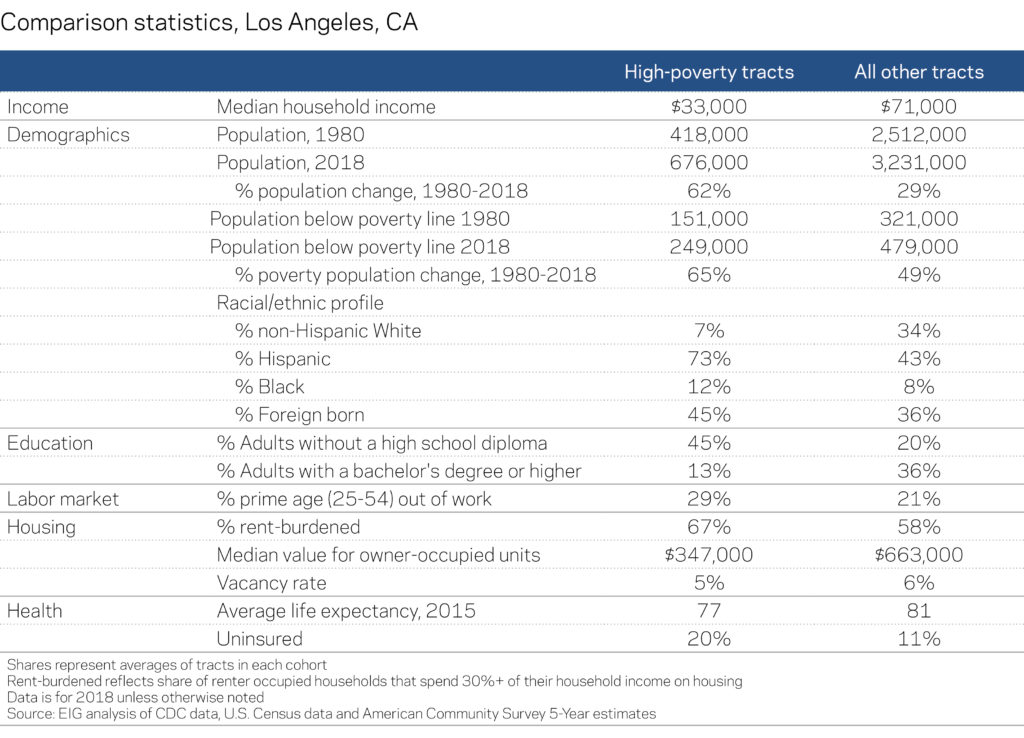The Neighborhood Poverty Project
Los Angeles contained 170 high-poverty neighborhoods in 2018, a sizeable increase from 139 in 1980. The city contains the third highest number of persistently poor neighborhoods after New York City and Chicago. Unlike New York City, Los Angeles saw only nine of its high-poverty neighborhoods transition to low poverty over the study period. The city’s 27 newly poor neighborhoods counterbalanced those turnaround ones three times over. Most of the city’s high-poverty neighborhoods have experienced population growth since 1980, with only 14 percent losing residents.
Los Angeles’ nine turnaround neighborhoods are scattered throughout the city. The largest and most central is the city’s Arts District, which saw its poverty rate decline from 40 percent in 1980 to 12 percent in 2018. This turnaround neighborhood is surrounded by tracts experiencing persistent poverty, many of which have had consistently high poverty rates for the past 38 years, including the city’s Skid Row, with a poverty rate of 79 percent. South of downtown, the city’s South-Central neighborhood provides an example of the huge demographic shifts occurring under the surface of the city’s stubbornly high poverty rate. The neighborhood’s Black population fell from 13,000 in 1980 to 3,000 in 2018 while its Hispanic population soared, reaching 46,000 in 2018, more than double the number in 1980.

Hispanics now make up 73 percent of the population of Los Angeles’ high-poverty neighborhoods, even though they represent a little less than half of the city’s total population. Blacks saw their share of the city’s high-poverty neighborhood population fall from 43 percent in 1980 to just 12 percent in 2018, largely driven by their exodus from the city over that time. Los Angeles’ Black population declined by one-third from 1980 to 2018, while its Hispanic population increased by 139 percent.
The average vacancy rate in Los Angeles’ high-poverty neighborhoods is just 5 percent, compared to 6 percent for non-high-poverty neighborhoods and 8 percent nationally, reflecting the city’s severe housing shortage. In the average high-poverty neighborhood, two-thirds of residents are rent-burdened. Meanwhile, the city’s homeless population increased by 16 percent in 2019 from the year prior for a total of 36,300 people living on the streets—demonstrating how the city’s housing affordability crisis exacerbates the condition of poverty for its most vulnerable residents.



